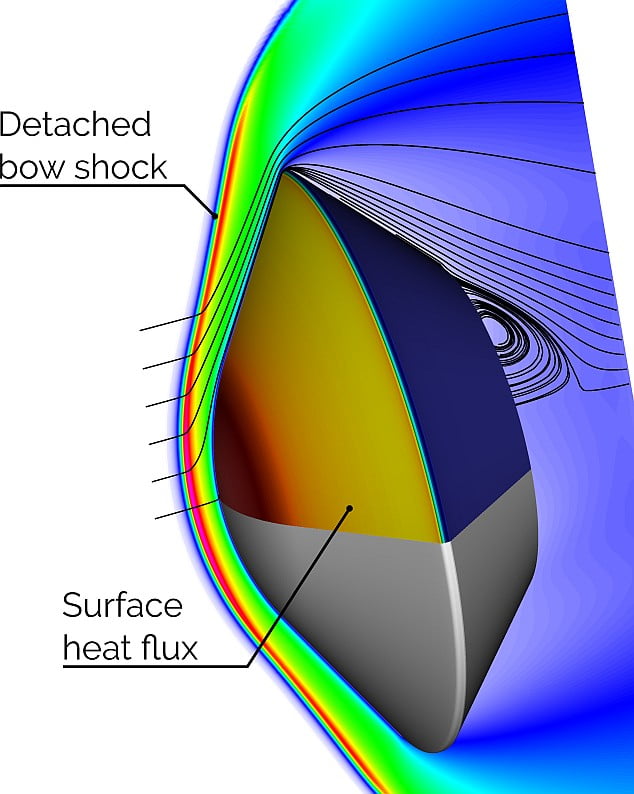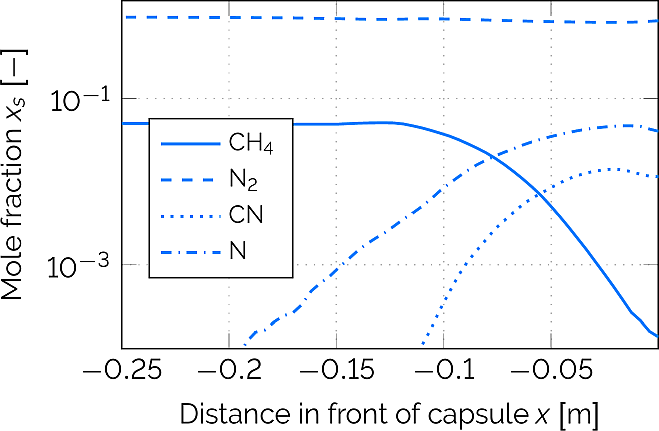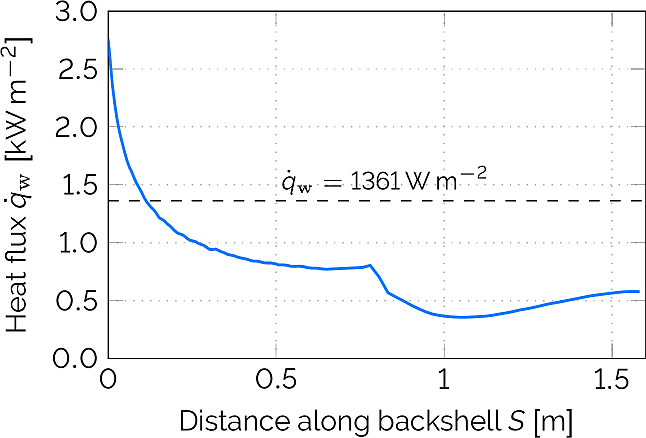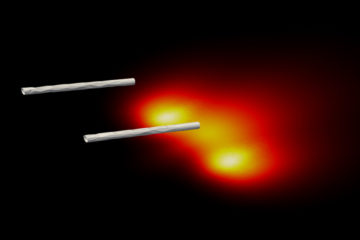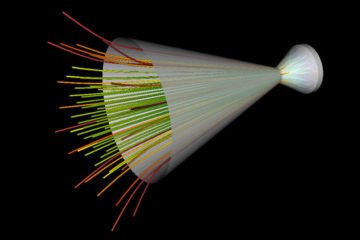Saturn’s moon Titan is of great to interest to the scientific community due to the thick nitrogen atmosphere with traces of methane, where spacecraft utilize its atmosphere to decelerate upon arrival. During this maneuver, spacecraft must withstand an extreme thermal environment. Through numerical simulations of the atmospheric entry, the conditions and the incident heat flux are approximated to support the design of the thermal protection system.
Hypersonic, high-enthalpy flow
For this application, a generic spacecraft geometry is simulated with the Direct Simulation Monte Carlo (DSMC) module of PICLas. The incoming free-stream conditions are derived at the point of peak heating from an exemplary aerocapture trajectory. The hypersonic flow at a Mach number of 20 results in high-enthalpy conditions with a detached bow shock and a rarefied region behind the capsule. The figure shows the translational temperature in the symmetry plane and flow streamlines.
Complex chemistry modelling
The simulations utilize a complex species and chemistry model consisting of 13 species (including methane, nitrogen and the respective reaction products) and 24 reactions paths. Additionally, internal energy exchange is considered by rotational, vibrational and electronic excitation.
Exemplary simulation results show the species composition of the gas mixture in front of the capsule and the incident heat flux on the back cover. Finally, this data can be utilized during the design of the heat shield to find the optimal solution with regard to the minimization of the total spacecraft mass.
More information about the underlying theory and modelling can be found here:
- Pfeiffer, M., Nizenkov, P., Mirza, A., & Fasoulas, S. (2016). Direct simulation Monte Carlo modeling of relaxation processes in polyatomic gases. Physics of Fluids, 28(2), 027103.
- Nizenkov, P., Pfeiffer, M., Mirza, A., & Fasoulas, S. (2017). Modeling of chemical reactions between polyatomic molecules for atmospheric entry simulations with direct simulation Monte Carlo. Physics of Fluids, 29(7), 077104.
